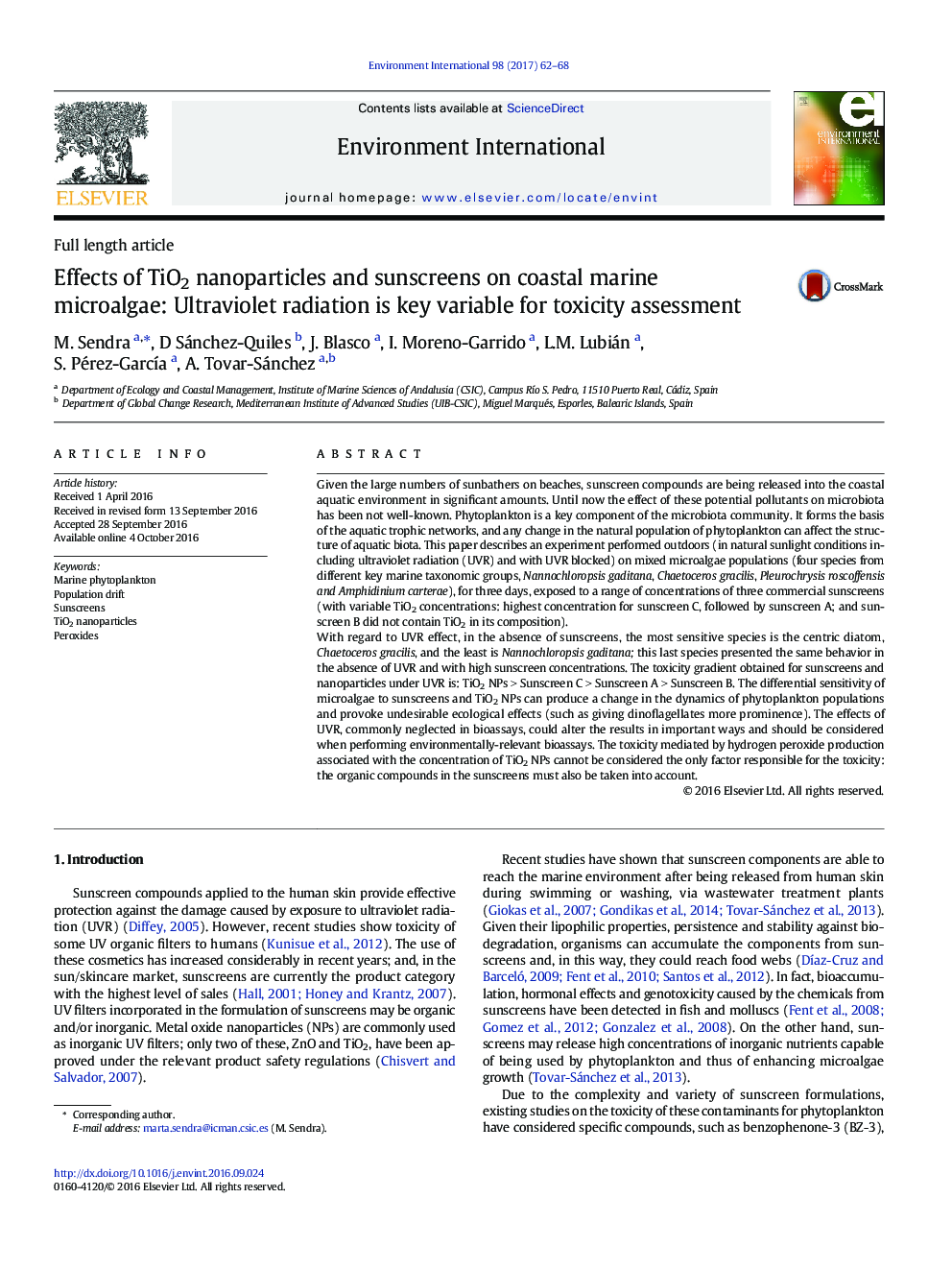| کد مقاله | کد نشریه | سال انتشار | مقاله انگلیسی | نسخه تمام متن |
|---|---|---|---|---|
| 5748455 | 1619032 | 2017 | 7 صفحه PDF | دانلود رایگان |

- UVR has a significant effect on species drift, triggering an increase on dinoflagellates population.
- The produced H2O2 from selected sunscreens seems to be due to the organic compound more than inorganic UV filters.
- H2O2 produced from selected sunscreens was not the main responsible of the toxicity in marine phytoplankton.
- Under UVR, TiO2 in sunscreen is a major cause of toxicity to phytoplankton.
Given the large numbers of sunbathers on beaches, sunscreen compounds are being released into the coastal aquatic environment in significant amounts. Until now the effect of these potential pollutants on microbiota has been not well-known. Phytoplankton is a key component of the microbiota community. It forms the basis of the aquatic trophic networks, and any change in the natural population of phytoplankton can affect the structure of aquatic biota. This paper describes an experiment performed outdoors (in natural sunlight conditions including ultraviolet radiation (UVR) and with UVR blocked) on mixed microalgae populations (four species from different key marine taxonomic groups, Nannochloropsis gaditana, Chaetoceros gracilis, Pleurochrysis roscoffensis and Amphidinium carterae), for three days, exposed to a range of concentrations of three commercial sunscreens (with variable TiO2 concentrations: highest concentration for sunscreen C, followed by sunscreen A; and sunscreen B did not contain TiO2 in its composition).With regard to UVR effect, in the absence of sunscreens, the most sensitive species is the centric diatom, Chaetoceros gracilis, and the least is Nannochloropsis gaditana; this last species presented the same behavior in the absence of UVR and with high sunscreen concentrations. The toxicity gradient obtained for sunscreens and nanoparticles under UVR is: TiO2 NPs > Sunscreen C > Sunscreen A > Sunscreen B. The differential sensitivity of microalgae to sunscreens and TiO2 NPs can produce a change in the dynamics of phytoplankton populations and provoke undesirable ecological effects (such as giving dinoflagellates more prominence). The effects of UVR, commonly neglected in bioassays, could alter the results in important ways and should be considered when performing environmentally-relevant bioassays. The toxicity mediated by hydrogen peroxide production associated with the concentration of TiO2 NPs cannot be considered the only factor responsible for the toxicity: the organic compounds in the sunscreens must also be taken into account.
177
Journal: Environment International - Volume 98, January 2017, Pages 62-68